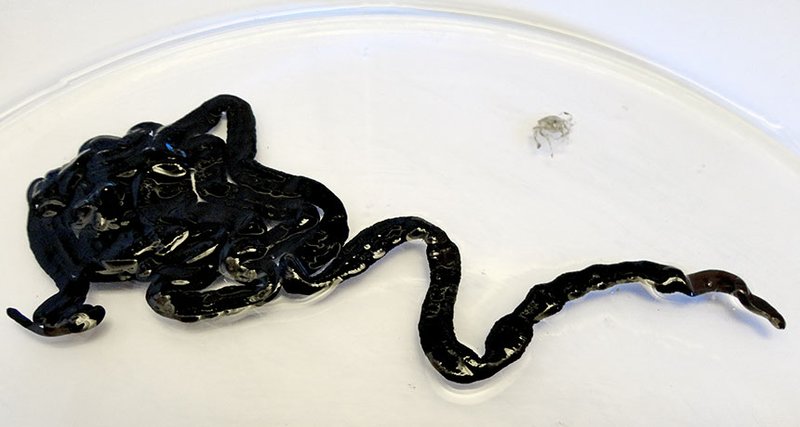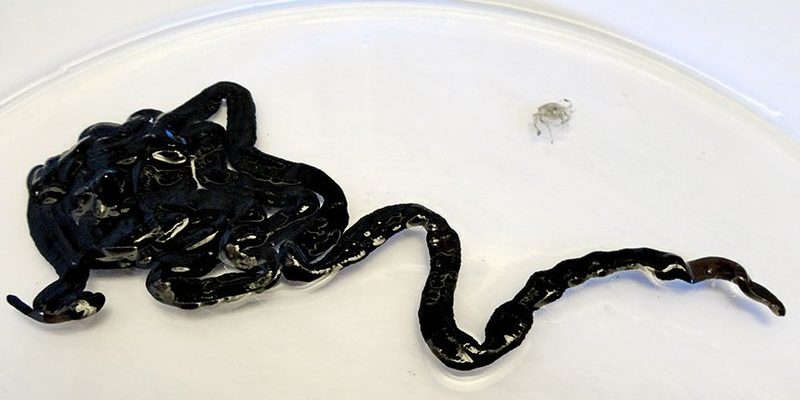
Let’s dive into the depths of this slippery topic and unravel what makes the bootlace worm’s toxic slime so special. From its composition to its evolutionary role, you’ll discover that there’s more to this marine marvel than meets the eye. So, grab your favorite drink, and let’s talk about this wonderful creature!
What Is a Bootlace Worm?
Before we get into the nitty-gritty of the bootlace worm’s toxic slime, let’s take a moment to understand what this creature actually is. Bootlace worms belong to the class of ribbon worms, also known as nemerteans. They’re mostly found in cold waters, particularly around Europe and North America. Despite looking like a colorful strand of spaghetti, these creatures pack a punch with their unique adaptations.
You might be wondering why they’re called bootlace worms. The name comes from their long, thin, and flexible bodies, resembling the laces of shoes. However, it’s not just their looks that are captivating; it’s what they can do! Bootlace worms have a highly developed anatomy that allows them to capture prey effectively. And that’s where their toxic slime comes into play.
The Composition of Toxic Slime
So, what’s in this magical toxic slime that makes it so effective? The slime’s makeup includes a combination of proteins, enzymes, and other bioactive compounds. The primary component is a type of mucus that not only serves to trap prey but also contains various toxins. These toxins can deter predators, making the bootlace worm less appealing to potential threats.
To break it down further, the slime isn’t just a random mixture. It contains:
- Muscle Cells: These cells help the worm move and extend its body. When the worm contracts, it can quickly release the slime.
- Toxins: Various proteins and enzymes disrupt the nervous systems of smaller animals, essentially immobilizing them for easy consumption.
- Mucus: This slippery substance covers the worm, aiding in its movement while also serving as a layer of protection.
The combination of these elements creates a potent defense mechanism while also facilitating the worm’s feeding habits. It’s a win-win for the bootlace worm!
Why Do Bootlace Worms Produce Toxic Slime?
You might be curious about the reasons behind the bootlace worm’s slime production. Here’s the thing: the toxic slime serves several essential functions. For one, it acts as a **defense mechanism**. In the wild, many creatures encounter potential threats daily. A well-timed release of toxic slime can send even the hungriest predator packing.
Moreover, the slime helps with feeding. When a bootlace worm encounters prey, it can quickly shoot out its slime to trap smaller fish or crustaceans. This method allows the worm to catch dinner without much effort. It’s like having a built-in fishing net!
This strategy allows bootlace worms to thrive in their habitats, showcasing their adaptability. So, when you see a bootlace worm gracefully moving through the water, remember—it’s not just a pretty sight; it’s also a survival expert!
How Does the Slime Affect Other Marine Life?
The toxic slime of the bootlace worm doesn’t just impact the worm itself; it has ripple effects in the entire marine ecosystem. For smaller fish or invertebrates unlucky enough to get caught in the slime, it can mean a quick demise. Predators that consume bootlace worms may also be affected by the toxins, creating a cautionary tale in the food chain.
Interestingly, the presence of bootlace worms can help control populations of smaller fish or invertebrates. By keeping these populations in check, bootlace worms balance their ecosystem, ensuring that no one species dominates the environment too much.
It’s a fascinating interplay where one creature’s adaptation can have wide-ranging implications for marine life. Think of the bootlace worm as the unsung hero—or villain—of its underwater realm!
Are Bootlace Worms Dangerous to Humans?
While the bootlace worm’s toxic slime is designed to deter predators, you might be wondering if it’s a threat to humans. The good news is that these worms typically don’t pose any danger to us. Their toxins largely affect smaller marine organisms, and they aren’t aggressive towards humans.
That said, like many marine creatures, it’s essential to exercise caution. If you happen to touch a bootlace worm or come into contact with its slime, you might experience mild irritation. It’s always best to admire these creatures from a distance and respect their space in the ocean.
So, while they’re amazing to learn about, they don’t make great pets or companions for swimming. Enjoy looking at them, but keep your distance to avoid any unpleasant surprises!
In wrapping up our exploration of bootlace worm toxic slime, we’ve uncovered how this fascinating marine creature uses its unique adaptations to survive and thrive. The slime’s composition is a stunning example of evolution at work—combining defense, hunting strategies, and ecological balance all in one gooey package.
Next time you hear about these incredible worms, you’ll know that beneath their colorful exteriors lies a world of complexity. These tiny titans of the sea remind us just how intricate and fascinating nature can be, making every visit to the ocean a little more magical. So here’s to embracing the wonders of the marine world, one slimy creature at a time!

